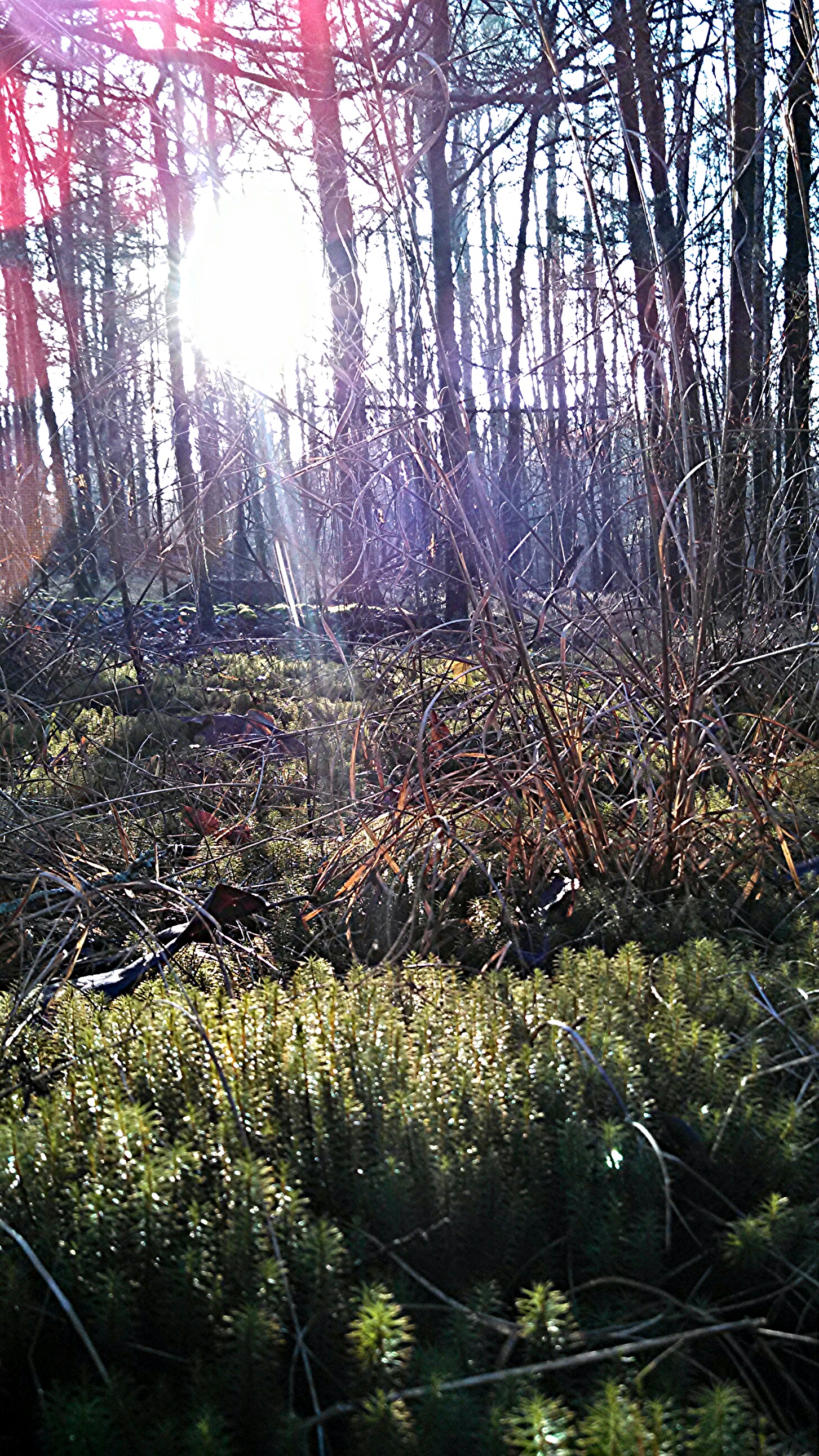In Gaelic communities the beginning of February is marked by the festival of Imbolc, Christianized as the feast day of St. Brigid. This celebration is held in the honor of the first appearance of spring, represented in Gaelic myth as Brigid, the Bride.
“She is goddess of the household fire; her position is that of the hearth goddess Vesta, as much as that of Minerva, for evidently she is primarily a fire-goddess. Her name is probably from the same root as the English bright, Gaelic brco. The British goddess, Brigantia, is doubtless the same as the Irish Brigit Mr Whitley Stokes picks out the following instances in proof of her character as a fire-goddess; she was born at sunrise; her breath revives the . dead; a house in which she stays flames up to heaven; she is fed with the milk of a white red-eared cow; a fiery pillar rises from her head, and she remains a virgin like the Roman goddess, Vesta, and her virgins—Vesta, whom Ovid tells us to consider ” nothing else than the living flame, which can produce no bodies.” Cormac calls her the daughter of the Dagda. “This Brigit,” he says, “is a poetess, a goddess whom poets worshipped. Her sisters were Brigit, woman of healing; Brigit, woman of smith work; that is, goddesses; these are the three daughters of the Dagda.”
– Celtic Mythology & Religion, Alexander McBain
Fire is a potent traditional symbol of the eternal spirit, and the hearth fire is, in some ways, a continuation of this symbol in the domestic setting. Here the house becomes a temple to the eternal, an outward manifestation of the temple built within the faithful. Those who rely on a fire for warmth and for cooking know well what it takes to properly tend and keep the central fire alive. Constant attention within the home, and constant work without to find fuel that’s fit to burn. No different, really, than keeping the fire at the heart of a tradition alive –
“When a traditional form is on the point of becoming extinct, its last representatives may very well deliberately entrust to this aforesaid collective memory the things that otherwise would be lost beyond recall; that is in fact the sole means of saving what can in a certain measure be saved. At the same time, that lack of understanding that is one of the natural characteristics of the masses is a sure enough guarantee that what is esoteric will be nonetheless undivulged, remaining merely as a sort of witness of the past for such as, in later times, shall be capable of understanding It.”
– Symbols of the Sacred Science, Rene Guenon
Appalachia, as the center point of migration for the remnants of so many traditional cultures, became a storehouse for these traditional forms. The manifestations of the Holiness Churches, of Hoodoo, and Deutsch Pow Wow among the Amish and Mennonite, show that even when these transmissions were weakened by forgetfulness, their manifestations still continue to hold the powerful impetus of true tradition, that “rock of ages” that can never be destroyed.
There are even vestiges of more recent esoteric traditions, such as the Hermetic Brotherhood of Luxor, whose outer head for the Americas and France, the Scottish born Dr. Peter Davidson, kept his home in Loudsville, Georgia, until his death in 1915. Members of Davidson’s family still live in Georgia, and memories of him and his utopian commune still exist in the rural climes of north Georgia. The fire of life may burn out of the body, but the fire of tradition lives on mouth to ear for those who listen.
“Minerva is the fifth and last deity mentioned by Caesar as worshipped by the Gauls—their goddess of arts and industry. A passage in Solinus, and another in Giraldus Cambrensis, enable us to decide, with absolute certainty, what goddess answered among the Gaels to the position of Minerva. Solinus (first century A.D.) says that in Britain, Minerva presides over the hot springs, and that in her temple there flamed a perpetual fire, which never whitened into ashes, but hardened into a strong mass.
Giraldus (12th century A.D.) informs us that at the shrine of St Brigit at Kildare, the fire is allowed never to go out, and though such heaps of wood have been consumed since the time of the Virgin, yet there has been no accumulation of ashes. “Each of her nineteen nuns has the care of the fire for a single night in turn, and on the evening before the twentieth night, the last nun, having heaped wood upon the fire, says, ‘Brigit, take charge of your own fire, for this night belongs to you.’ She then leaves the fire, and in the morning it is found that the (ire has not gone out, and that the usual quantity of fuel has been used.” This sacred fire was kept burning continually for centuries, and was finally extinguished, only with the extinction of the monasteries by Henry VIII.”
– Celtic Mythology & Religion, Alexander McBain
By 1850 the U.S. census shows that there were 961,719 Irish living in the United States, stretching from Illinois to the east coast. By this time they had already spread into Appalachia, taking with them the traditions they had kept alive at home. Each time the secular authories (whether by government or religion) sought to divide the people, within their hearts and homes many continued to quietly pursue the truth.
When the community temples are destroyed, the eternal flame is taken home by the faithful. The Divine presence in the famed European cathedrals exists in the very measurements used to create them, sacred mathematics that contain secrets of the eternal fire. In the most material understanding these are manifest in the allegorical and symbolic statues and stained glass that adorn the cathedral, but the heart of the secret lies in the very roots of the cathedral’s construction.
When these truths are displaced from the fine edifice of monuments like the cathedrals, something as simple as a hearth fire keeps the secret alive among the people who await the purification of the community’s heart, and the return to traditions that more closely reflect the harmony of nature and being.
Thig an nathair as an toll
Là donn Brìde,
Ged robh trì troighean dhen t-sneachd
Air leac an làir.“The serpent will come from the hole
On the brown Day of Bride,
Though there should be three feet of snow
On the flat surface of the ground.”
Alexander Carmichael collected the folk traditions of the Gaelic people of Scotland in the late 19th century, and discovered that despite institutional attacks from the organized church to stamp out “pagan” practices, in secret the people still carried many of their ancient traditions.
Brigit, the Bride, symbol of wisdom and fire, lived on in the people’s hearts, prayers and blessings, awaiting the day when those would come who could hear her again. Just as her release from the Crone of Winter is celebrated in the first days of Spring, her memory sleeps in the Winter of a fallen culture.
“The mystical truth which is realized in the sage is virtual in the folk. If the folk are the field, the sage is the fruit of the tree which grows in the center of it, a fruit which, even as it takes its place in the eternal domain of God’s attributes, also cyclically returns to the field from which it grew, via its seed, to propagate wisdom. The folk correspond to the Aristotelian materia, that which receives the imprint of forms, and the sage to forma, that which shapes or “informs” the material which allows it to appear. And the tree corresponds to Tradition in the sense employed by French metaphysician René Guénon: that body of spiritual Truth, lying at the core of every religious revelation and a great deal of folklore and mythology, which has always been known by the “gnostics” of the race since it is eternal in relation to human time, representing as it does the eternal design or prototype of Humanity itself. A traditional culture permeated by half-understood mystical lore on the folk level is a fertile matrix for the full development of the gnostic, the sagacious individual, who, by means of his darshan, his willingness to allow himself to be contemplated as a representative of spiritual Truth, returns the seed of wisdom to the folk who venerate him.”
– “Fair Nottamun Town”: Mystical and Alchemical Symbolism in an Appalachian Folk Song, Charles Upton
In folk etymologies there are hidden secrets that dance around the investigations of scholars. In the Sanas Cormaic, a 19th century collection of Gaelic etymologies, Brigit’s Gaelic name, Breo Saighead, was said to mean “the fiery arrow.” Academic etymologist’s scoff at such an attribution and miss the line of truth that it transmits.
“I saw in his hand a long spear of gold, and at the iron’s point there seemed to be a little fire. He appeared to me to be thrusting it at times into my heart, and to pierce my very entrails; when he drew it out, he seemed to draw them out also, and to leave me all on fire with a great love of God. The pain was so great, that it made me moan; and yet so surpassing was the sweetness of this excessive pain, that I could not wish to be rid of it…”
– Therese of Avila
We so often seek the flame in those that reflect the outward power of our culture. In celebrities and scholars, in political leaders and religious figures, we put our expectations in these socially acceptable shells to bring us some shred of light in the hope that they will clarify the way forward towards the truth. Often we are simply feeding the wolves who wait for easy prey. All the while, in quiet homes in rural Appalachia, and around the world in places where tradition has been pushed to the wilds, the true fire burns bright, awaiting those who can see it. When it is found by a sincere and searching heart, it is hard not to rejoice at the herald of the upcoming Spring.
–
(For Dr. Peter Davidson, who lived here in the beautiful rural atmosphere of north Georgia where I now write, waiting for the daylight to dawn.)
Note: This collection of musings and quotes was originally published on The Eyeless Owl













